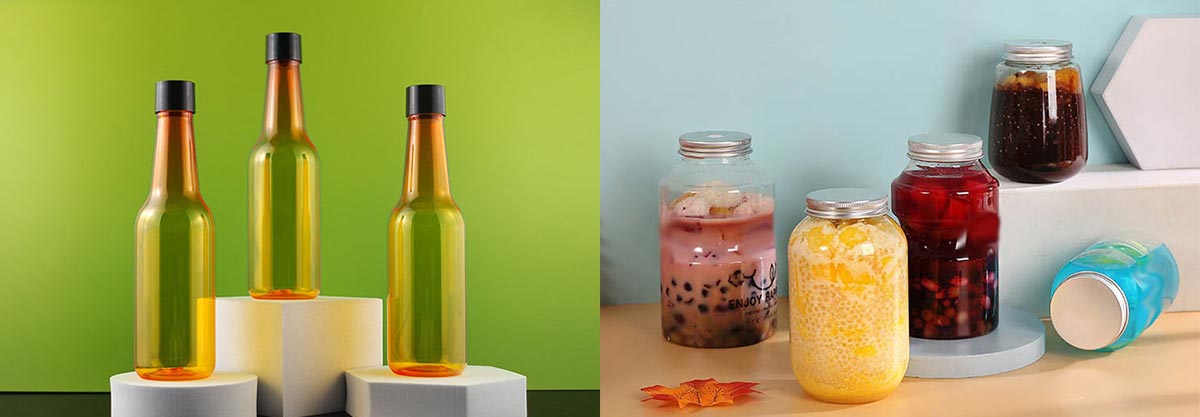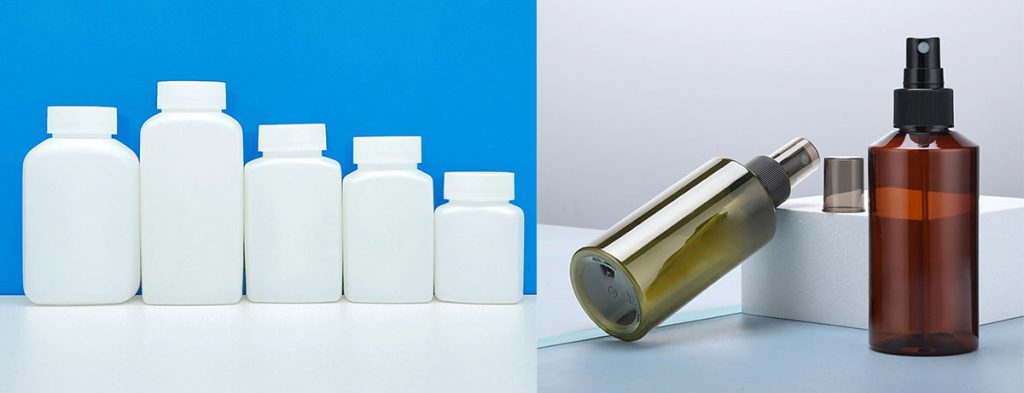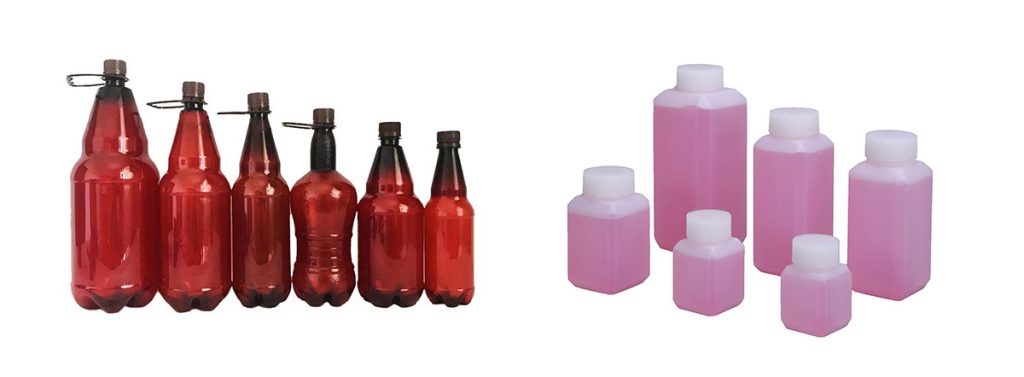

Choosing the right plastic material for injection blow moulding in 2025 requires careful material selection based on application needs, cost, sustainability, and machine compatibility. Engineers match material properties, such as impact resistance and heat resistance, to the demands of each blow molding project. They analyze plastic resin and thermoplastic resin options, referencing Material Data Sheets for optimal performance. The global market for HDPE containers reached $10,433.4 million in 2025, showing strong growth due to versatility and durability. Overlap exists between injection and blow molding materials, making compatibility essential.
- Key factors for material selection:
- Impact, heat, and chemical resistance
- Analysis of environmental conditions
- Alignment with specifications of IBM machine
Key Takeaways
- Choose materials based on specific application needs, including chemical resistance, strength, and temperature tolerance.
- Always review Material Data Sheets to confirm compatibility with injection blow moulding machine and ensure optimal performance.
- Consider sustainability by opting for biodegradable or recycled plastics to reduce environmental impact and support eco-friendly practices.
- Regularly test materials with IBM machine to identify potential issues early and ensure high-quality production.
- Stay informed about regulatory standards to ensure safety and compliance in material selection for various applications.
Injection Blow Moulding Material Selection
Selection Process Steps
Selecting the right plastic for injection blow moulding in 2025 involves a structured approach. Engineers must consider both the end-use application and the capabilities of the IBM machine. The process focuses on matching material properties to the demands of the product and the production environment. The following steps outline a typical selection process:
- Chemical Resistance: Engineers assess if the plastic can withstand exposure to chemicals. This step is essential for packaging household cleaners and pharmaceuticals.
- Strength and Durability: The team evaluates if the material can provide the required strength and longevity. High-strength plastics are necessary for products that need to last.
- Clarity and Aesthetics: For cosmetic and food packaging, clarity and appearance matter. Transparent plastics help showcase the product inside.
- Flexibility: Some applications, like ISBM bottles, require flexible materials. The selection process checks if the plastic can bend without breaking.
- Temperature Resistance: Products exposed to heat need plastics that can handle higher temperatures without deforming.
Tip: Always review the Material Data Sheet for each plastic to confirm its suitability for injection blow moulding and IBM machine compatibility.
Engineers also consider the overlap between injection molding materials and blow molding raw materials. This overlap allows for greater flexibility in material selection and helps optimize performance and cost. The selection process must align with future trends, such as the growing demand for sustainable and recycled plastics.
IBM Machine Compatibility
IBM machine compatibility plays a critical role in the success of injection blow moulding. The right choice of materials ensures smooth operation, reduces downtime, and extends the life of the equipment. Material compatibility affects both the machine’s components and the final product’s quality.
Material properties such as flow, viscosity, and shrinkage rate determine how well a plastic performs during the injection and blow molding stages. These properties influence the ease of processing and the consistency of the final product. Production needs, including safety standards for food-grade plastics, must also guide the selection of injection molding materials.
- Key factors for IBM machine compatibility:
- Material properties: Flow, viscosity, and shrinkage rate must match the machine’s capabilities.
- Production needs: The plastic must meet the specific requirements of the product, such as regulatory standards for food or pharmaceuticals.
- Cost considerations: Balancing the use of virgin and recycled plastics helps manage production costs while maintaining performance.
Material compatibility in IBM machine design ensures equipment longevity, maintains fluid integrity, and minimizes the risk of contamination or failure. Engineers must regularly test new injection molding materials with the IBM machine, and in some cases the ISBM machine, to verify performance and make adjustments as needed.
Note: Regular testing and validation with the IBM machine help identify the best combination of blow molding raw materials and injection molding materials for each application.
Comparative Review of Injection Blow Moulding Materials
HDPE and LDPE
High-density polyethylene (HDPE) and low-density polyethylene (LDPE) are two of the most common blow molding materials. Both plastics offer excellent chemical resistance and process easily in injection blow moulding. However, their properties differ in flexibility, strength, and heat resistance.
| Property | LDPE | HDPE |
|---|---|---|
| Flexibility | More flexible due to low density | Tougher and more rigid due to high density |
| Heat Resistance | Decreases significantly beyond 20°C | Resists heat above 100°C |
| Strength | Increased impact strength in cold | High tensile strength and specific strength |
| Chemical Resistance | Resistant to most alcohols and acids | Outstanding resistance to acids and solvents |
| Cost | Generally lower cost | Slightly higher cost but not substantial |
HDPE and LDPE serve different application areas. HDPE is often used for containers, piping systems, and automotive parts. LDPE is popular for packaging, flexible bags, and squeeze bottles. Both plastics appear in food and beverage packaging, construction materials, and storage solutions. The price difference between LDPE and HDPE remains small, making both resins accessible for most projects.
Note: LDPE is cheaper than HDPE, but HDPE offers better strength and heat resistance, making it suitable for more demanding applications.
Polypropylene (PP)
Polypropylene (PP) stands out among blow molding materials for its versatility and cost-effectiveness. This plastic provides high stiffness, good chemical resistance, and excellent dimensional stability. PP resists moisture absorption and fatigue, making it ideal for products that require repeated use.
| Advantages of PP Injection Moulding | Disadvantages of PP Injection Moulding |
|---|---|
| Very affordable | Poor bonding qualities |
| Lightweight | Susceptible to UV deterioration |
| Good chemical resistance | High flammability |
| Great electrical insulation | Sensitive to aromatics and chlorinated solvents |
| High resistance to moisture and fatigue | Limited dimensional stability |
PP performs better than polyethylene (PE) in applications that demand rigidity and dimensional stability. It withstands higher temperatures without deforming, which makes it suitable for hot-fill containers and medical devices. While PE excels in impact strength and ease of processing, PP is the preferred choice for products that need to maintain shape and structure. PET, another common resin, is often chosen for its clarity and barrier properties, especially in packaging.
PVC and PS
Polyvinyl chloride (PVC) and polystyrene (PS) are also widely used blow molding materials. Each plastic offers unique properties that influence its selection.
| Material | Unique Properties |
|---|---|
| PVC | Durability, dimensional stability, resistance to flame, chemicals, and abrasion |
| PS | Rigidity, cost-effectiveness, but brittleness limiting durability applications |
PVC is valued for its durability and resistance to chemicals, flame, and abrasion. It is often used in construction, medical devices, and packaging that require long-lasting performance. PS, on the other hand, is rigid and cost-effective but tends to be brittle. This limits its use in applications where impact resistance is critical. PS is common in disposable packaging and lightweight containers.
ABS, PU, Santoprene
Acrylonitrile butadiene styrene (ABS), polyurethane (PU), and Santoprene are engineering plastics with distinct properties. These blow molding materials offer varying levels of flexibility and durability.
| Material | Flexibility | Durability |
|---|---|---|
| ABS | Moderate flexibility | Moderate durability |
| PU | Rigid | High durability, temperature resistant |
| Santoprene | Versatile, rubber-like | Long-lasting, suitable for various applications |
ABS provides moderate flexibility and durability, making it suitable for consumer goods and automotive parts. PU is more rigid but offers high durability and temperature resistance, which is important for industrial applications. Santoprene, a thermoplastic elastomer, combines the flexibility of rubber with the processability of plastic. It is long-lasting and works well in products that require repeated bending or stretching.
Cost factors for these materials include labor, energy, raw material price, mold design, and machine costs. The complexity of the mold and the type of resin selected can significantly affect overall project expenses.
Nylon (PA)

Nylon (PA) is a high-performance plastic known for its mechanical strength and toughness. It is one of the most reliable blow molding materials for demanding applications.
| Pros/Cons | Description |
|---|---|
| High mechanical strength | Exhibits high tensile and compressive strengths, surpassing some metals |
| Outstanding fatigue resistance | Maintains strength after repeated bending |
| High thermal resistance | Withstands temperatures over 150°C; reinforced types exceed 250°C |
| Smooth surface | Low friction and self-lubricating properties |
| Corrosion resistant | Resists chemicals, suitable for lubricants and fuels |
| Self-extinguishing | Non-toxic, excellent weatherability, antibacterial |
| Excellent electrical properties | High insulation, effective in humid conditions |
| Lightweight and easy to mold | Low melt viscosity, enhances production efficiency |
| Water absorption | High absorption affects dimensional stability and electrical properties |
| Poor light resistance | Oxidizes and cracks under prolonged heat |
| Strict molding requirements | Moisture and uneven wall thickness can affect quality |
| Swelling | Absorbs water or alcohol, not resistant to strong acids and oxidants |
Nylon offers a balance of lightweight and strength, with excellent wear resistance. It performs well in applications that require repeated mechanical stress, such as gears and handrails. However, its high water absorption can affect dimensional stability and electrical properties. Compared to other engineering plastics, nylon stands out for its toughness and chemical resistance, but it requires careful control during processing.
Biodegradable and Recycled Options
Sustainable blow molding materials have gained popularity in recent years. Manufacturers now use compostable bioplastics from cornstarch or sugarcane, paper-based alternatives with minimal plastic coatings, and recycled plastic packaging made from post-consumer waste. Innovations include next-generation PLA and PHA blends, algae-based bioplastics, enzyme-infused plastics, and high-performance bio-composites. The use of post-consumer recycled (PCR) and post-industrial recycled (PIR) plastics, such as rPET, rPP, and rHDPE, is increasing in injection blow moulding.
- Biodegradable plastics contain additives that help them break down faster than traditional plastics under the right conditions.
- Recycled resins, including PCRs and plastic regrind, are essential for sustainable manufacturing.
- Sustainable plastics help reduce plastic waste and lower the carbon footprint of production.
- For larger products and items intended for reuse, recycled resins may offer better performance and cost-effectiveness.
Smart Polymers
Smart polymers represent the latest advancement in blow molding materials. These plastics respond to environmental changes such as temperature, pH, or light. Manufacturers use smart polymers in medical devices, packaging, and consumer products that require adaptive properties. Some smart resins can change shape, color, or mechanical properties when exposed to specific stimuli. This innovation opens new possibilities for injection blow moulding, allowing for products with enhanced functionality and user interaction.
Tip: Smart polymers can improve product safety, extend shelf life, and add value through unique properties not found in traditional plastics.
Matching Material to Application
Application Requirements
Selecting the right material for injection blow moulding starts with a clear understanding of application requirements. Engineers define the necessary material properties by considering the end-use environment and performance needs.
- Chemical resistance, strength, and durability remain essential for products exposed to harsh substances or frequent handling.
- Clarity and flexibility matter for packaging and consumer goods.
- Temperature resistance ensures optimal performance in hot or cold conditions.
- Aesthetic qualities such as gloss, color, and texture influence consumer appeal.
- Regulatory and sustainability requirements shape the final choice.
Tip: Always match material properties to the specific demands of the application to achieve optimal performance and efficiency.
Cost and Sustainability
The cost of the blow molding materials and their environmental impact play a major role in material selection. In 2025, bio-based plastics like PLA and PHA offer sustainable solutions with lower environmental impact. These materials work well for packaging and consumer goods focused on sustainability. Recycled plastics, such as post-consumer PET composites, can include up to 40% recycled content while maintaining quality and durability. This approach reduces waste and supports environmental goals. Engineers balance cost, efficiency, and durability to ensure optimal performance without sacrificing sustainability.
Regulatory and Safety
Regulatory and safety standards guide material selection for high-performance materials.
- ISO 9001:2015 and ISO 14001:2015 set quality and environmental management benchmarks.
- ISO 22000:2018 covers food safety management.
- Food-contact approved plastics like PET, HDPE, PP, and PLA meet strict migration and heavy metals limits.
- Chemical resistance is vital for containers holding acidic or alkaline substances.
- Quality control systems such as GMP and HACCP ensure compliance and safety.
Note: Meeting regulatory standards protects consumers and maintains product quality.
Post-Processing
Post-processing requirements influence both efficiency and durability.
- Blow molded parts often need trimming, which increases costs and extends timelines.
- Injection molding provides high precision and supports complex features, making it suitable for parts that require tight tolerances and optimal performance.
- General tolerances for blow molding are usually sufficient at +/-0.5 mm.
| Feature | Injection Molding | Blow Molding |
|---|---|---|
| Precision | High, supports fine details | Less precise, needs trimming |
| Material Choice | Suitable for high-performance materials | Simpler, less demanding |
| Cost Efficiency | Lower for high volume production | Higher due to extra processing |
Engineers select materials that support efficient post-processing, maintain quality, and deliver long-term durability.
Injection Molding Material Selection Guide
Define Needs
Professionals begin the injection molding material selection process by identifying the specific needs of the application. They assess mechanical properties such as strength and impact resistance. Thermal resistance and regulatory compliance also guide their choices. For example, food packaging requires materials that meet safety standards and withstand temperature changes. Engineers list all essential requirements before moving to the next step.
Evaluate Options
The next step involves comparing available materials. Engineers examine the four tiers of plastics, ranging from commodity to high-performance materials. They review cost, durability, and compatibility with the IBM machine. A table can help organize this information:
| Material Tier | Performance Level | Cost Range | Common Applications |
|---|---|---|---|
| Commodity | Basic | Low | Packaging, containers |
| Engineering | Moderate | Medium | Automotive, electronics |
| Specialty | Advanced | High | Medical, aerospace |
| High-Performance | Superior | Very High | Industrial, scientific |
Tip: Balancing cost and performance ensures the selected material meets both budget and quality goals.
Test with IBM Machine
Testing materials with the IBM machine is a crucial step. Engineers run small batches to observe flow, shrinkage, and final product quality. They check for compatibility issues and monitor how the material behaves during processing. This hands-on approach helps identify potential problems early. Engineers adjust settings or switch materials if results do not meet expectations.
Final Selection
After testing, professionals finalize the injection molding material selection. They choose the material that best matches application requirements, fits within budget, and complies with regulations. The team documents the decision and prepares for full-scale production. This structured approach leads to optimal performance and consistent quality.
Note: Regular review of new materials and ongoing validation with the IBM machine help maintain high standards and adapt to future trends.
Conclusion

Selecting the right material for injection blow moulding in 2025 requires careful evaluation of key factors. Engineers balance performance, cost, sustainability, and regulatory needs. The table below highlights important considerations:
| Material Type | Key Properties | Considerations for Use |
|---|---|---|
| Thermoplastics | Versatile, recyclable | Needs specific processing adjustments |
| Thermosets | High heat resistance | Best for durable applications |
| Metals | Strong | Uses different processing techniques |
| Bio-based Plastics | Low environmental impact | Preferred for sustainability |
- Maintain uniform wall thickness
- Incorporate draft angles
- Match materials to application needs
Ongoing testing with IBM machine helps ensure compatibility and supports innovation as new materials emerge.
FAQ
What Are the Most Common Materials Used in Injection Blow Moulding?
HDPE, LDPE, and polypropylene (PP) remain the most popular choices. These materials offer good chemical resistance, durability, and cost-effectiveness. Engineers also use PET, PVC, and recycled plastics for specific applications.
How Does Material Choice Affect Product Quality?
Material properties like strength, flexibility, and heat resistance directly impact product performance. Selecting the right resin ensures the final product meets safety, durability, and appearance standards.
Can Biodegradable or Recycled Plastics Be Used in IBM?
Yes. Many IBM machines process biodegradable and recycled plastics. These materials help reduce environmental impact. Engineers must test them for compatibility and performance before full-scale production.
What Factors Influence IBM Machine Compatibility?
Key factors include material viscosity, flow rate, and shrinkage. The IBM machine must handle the selected resin’s processing requirements. Regular testing ensures smooth operation and high-quality results.
Why Is Regulatory Compliance Important in Material Selection?
Regulatory compliance ensures products meet safety and quality standards. Food-contact items require approved materials. Compliance protects consumers and helps companies avoid legal issues.
